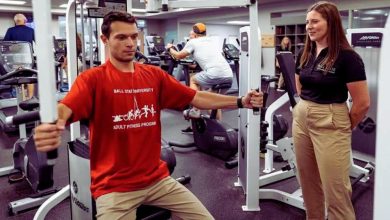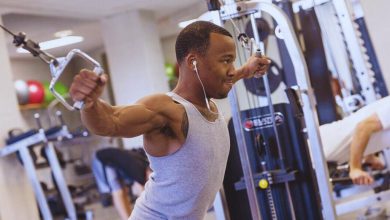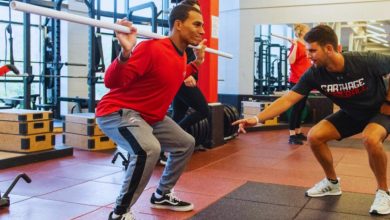Small Exercise Ball: Simple Exercises for Big Results
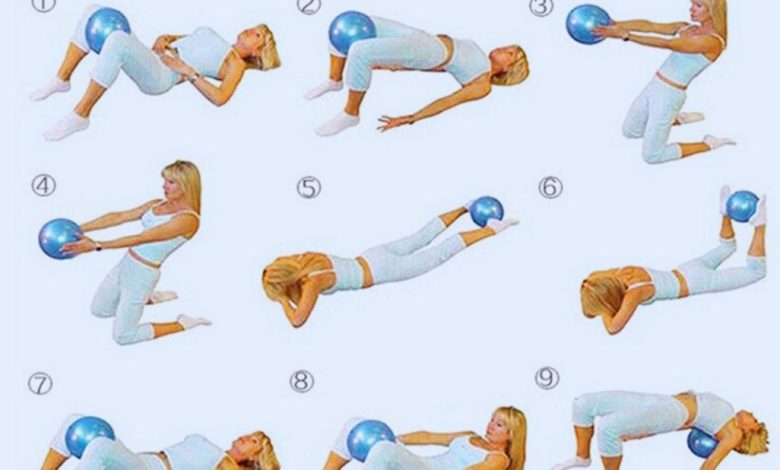
Simple Exercises for Great Results: Small Exercise Ball
Introduction: Small Exercise Ball
Small Exercise Ball is your go-to friend, whether your goals are muscle tone, balance improvement, or flexibility increase. This post will go over easy exercises you may do with this ball, illustrating how little modifications can have a significant impact.
Why Select a Small Exercise Ball
Perfect for home training, a Small Exercise Ball is portable and easy to store. It’s adaptable and lets you target many muscle groups. It also works gently on your body, lowering your chance of damage. Not only those who enjoy advanced workouts but beginners can also benefit from this ball’s simplicity and efficacy.
Versatility for Every Degree of Fitness
A Small Exercise Ball workout ball has one of the main benefits in its adaptability. The ball fits your needs regardless of your level of experience—that of a seasoned athlete or a novice just beginning your fitness path. Simple stretches to more complex strength-training motions are just a few of the activities you can do. Depending on your degree of fitness, the ball can be utilized to alter classic workouts so they either become more or less difficult.
Compact and Easy
A Small Exercise Ball exercise ball takes less space than heavy gym equipment. When not in use, you might conveniently keep it under your bed or in a closet. For individuals without much space for exercise equipment, this makes it a sensible option. Additionally, because it is light, you can carry it anywhere—to the office, on vacation, or even to a friend’s house for a quick training session.
Low Impact, High Reward
The Small Exercise Ball exercise ball is an excellent choice for folks with joint problems or those trying to avoid high-impact workouts. The ball lessens joint tension by supporting you during workouts. This lets you move in ways that might be too difficult or uncomfortable otherwise. The ball will help you engage your muscles more deeply and effectively, hence, even with modest impact, you will get great rewards.
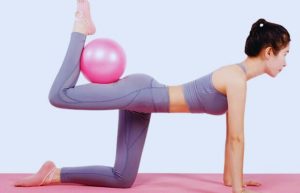
Reasons for Using a Small Exercise Ball
One gains a lot by using a tiny workout ball. It increases balance, straightens your posture, and tones your core muscles. Better muscular engagement results from your muscles working harder to keep you stable due to the ball’s instability. It’s also a great tool for unwinding and extending tight muscles.
Core Strengthening
For developing core strength especially, the Small Exercise Ball is quite useful. The ball is unstable, hence your core muscles—including those of the abs, lower back, and blues—have to work harder to maintain your balance. This increases your general stability and posture in addition to sharpening these muscles. A stronger core can eventually help one perform better in other exercises and daily tasks.
Postural Enhancement
Overall health depends on good posture, hence the little workout Small Exercise Ball will help you reach it. Many ball workouts call on you to keep an upright, balanced posture. Over time, this helps you improve posture by encouraging appropriate alignment of the hips, shoulders, and spine. Better posture helps lower back pain and other problems related to inadequate alignment.
Improved flexibility
An essential component of fitness, flexibility can be developed with the Small Exercise Ball l. The ball lets you stretch with more range of motion, therefore releasing tense muscles. Frequent ball stretching can help to improve flexibility, lessen muscular tension, and lower the chance of injury.
Coordination and Balance
Using a Small Exercise Ball forces coordination and balance. The ball is unstable, hence your body has to be continually changing to keep balanced. Usually overlooked in conventional strength training, this works your stabilizer muscles. These muscles get stronger with time, therefore enhancing your balance and coordination in daily life as well as during exercises.
Starting Your Small Exercise Ball
Make sure you choose the appropriate size ball before diving into workouts. Most activities benefit from a ball whose diameter falls between six and ten inches. Starting with basic motions, particularly if you have never used the ball before, Maintaining good form helps you to prevent injury.
Ball Selection: Correct
When choosing a tiny exercise ball, one should give material and size some thought. Though most small Exercise Balls are between 6 and 10 inches in diameter, you should pick one that fits your needs and feels comfortable. Search for a ball with a non-slip substance, durability, and a simple inflation technique. This will guarantee both safety and maximum benefit from your exercises.
Appropriate Inflation
The efficiency of your Small Exercise Ball workout ball depends on it being precisely solid. This requires inflation of it. An excessive softball will not give enough support for exercise. Should it be overly rigid, use could be uncomfortable or challenging. Inflate the ball till it is solid but still has some give when you squeeze it to reach the proper balance. During your workouts, this will enable you to keep stability and control.
Warm-Up
Spend some time warming up your body before beginning your small workout ball program. A basic warm-up could consist of dynamic stretches such as arm circles and leg swings or light cardio including jogging in place. Warm-ups help your muscles get more blood flow, lowering your chance of injury and preparing your body for the upcoming exercise.
Easy Core Strength Exercises
Seated Ball Squeeze
How To Do It
Straight back on a chair will help you. Nest the Small Exercise Ball between your knees. With knees, squeeze the ball; hold for five seconds then release.
Advantages:
This workout builds your core muscles and works your inner thighs.
Ball Pass

How to Perform It:
Lie straight back and stretch your legs. Between your hands hold the ball. To send the ball from your hands to your feet, raise your legs and arms. Then repeat lowering your legs and arms back down.
advantages
This movement works your abs particularly as well as your whole core.
. Pelvic Tilts
How to Perform It:
Lay on your back feet flat on the floor and knees bent. Under your lower back, position the little workout ball. Tuck your pelvis gently upward, press your lower back into the ball, then go back to the beginning position.
Benefits abound: This workout works the core muscles and increases the lower back strength.
. Reverse Crunch
How to Perform It:
Lie on your back, bowed legs, the tiny exercise ball between your knees. Rising your hips off the ground, raise your knees toward your chest, then gently lower yourself back.
Benefits: This drill works the lower abs, so strengthening the core.
Boosting Balance with a Small Exercise Ball
Single-Leg Ball Balance
How Should I Approach It:
Stance one leg and hold the ball in front of you. Keeping your equilibrium, gradually raise the ball above. After few repetitions, switch legs.
advantages:
This activity works your legs and core and enhances balance.
Wall Squat with Ball
How To Do It: Arrange the ball between a wall and your lower back. Keeping the ball in place, slowly lower it as if seated in a chair. Spend a few seconds in the squat then stand back up.
Advantages
This squat variation works your glutes, and thighs, and increases stability.
Rising Leg Lift
**How Should I Approach It:** Stand with both hands clutching the little workout ball. As you raise the ball overhead, straight out one leg frontward. Hold a few seconds then alternate legs.
Benefits: This action tests your balance and increases your core and leg strength.
Side Leg Raise
How to Do It:
One hand holds the little exercise ball at your side. Keeping your opposing leg straight and raised to the side, use your other hand to raise the ball overhead.
Benefits:
This work targets the outer thighs and improves coordination and balance.
Exercises in Stretching and Flexibility:
Overhead Stretch
How to Do It:
Sit on the floor crossing your legs. Holding the ball over your head with both hands and raising your arms gently upward can help you feel in your shoulders and back.
Advantages: This lengthens your upper body and releases tension in it.
Hamstring Stretch}
How to Do It:
Lay back and stretch one leg. Put the ball beneath the heel of your other leg and lightly compress down. Stretch for a few seconds then alternate legs.
Benefits:
Targeting your hamstrings, this stretch helps avoid tightness.
Chest Opener
Standing with the tiny workout ball held behind your back in both hands, Raising the ball gently, expand your shoulders and chest.
The advantages are This elongation increases flexibility and posture by helping your shoulders and chest release stress.
Seated Forward Bend
** How to Do It:** Sit on the floor, legs stretched in front of you. Set the little workout ball on your lap. As you bend at the hips and reach toward the ball, roll it slowly forward.
FAQ:
What is a tiny exercise ball, and mostly for what use?
This smaller form of stability balls, designed to target specific regions of the body, is ideal for boosting core strength, balancing, and flexibility, unlike larger stability balls. Pilates, yoga, physical rehabilitation, and general fitness programs all frequently feature the little exercise ball. Its small design allows for a greater range of motion and the ability to do exercises that require accuracy and control.
With a tiny exercise ball,
What are some good workouts I could perform?
Targeting different muscle groups, the little exercise ball is incredibly flexible and may be included in several workouts. Here are some fantastic workouts you could try:
To strengthen your core muscles more fully, place the ball under your lower back and perform crunches. For an extra challenge, you can also do reverse crunches or leg lifts with the ball between your knees.
Equilibrium and stability
Planks with one foot or hand resting on the ball can help you challenge your balance using the ball. This instability causes your stabilizing muscles and core to work harder.
Flexibility and stretching:
The ball can help one deepen stretches. For a bridge position, for instance, lying the ball beneath your back helps to open the chest and more properly stretch the spine.
Strength training: Holding the ball between your hands or using it to engage your inner thighs will allow you to incorporate it into strength exercises like squats or lunges.
Regarding rehabilitation: Particularly for strengthening weak muscles or increasing joint mobility, little exercise balls are sometimes used in physical therapy to aid in rehabilitation.
Is a tiny exercise ball appropriate for all fitness levels, and how may it be modified for varying degrees of ability?
Indeed, people of all fitness levels—from beginners to advanced athletes—can benefit from a little exercise ball. One of its strongest suits is adaptation. The ball can be used to adjust exercises for novices, therefore reducing their intensity and making them more under control. For floor workouts, for example, using the ball as a cushion helps to relieve joint pressure, allowing for more pleasant movements. The ball can be utilized to raise the challenge of exercises as you go by including an element of instability that calls for more muscular engagement and control. Advanced users can use the ball for challenging balance, strength, and coordination at the same time by including it in high-intensity workouts or challenging multi-muscle exercises.
How should I care for and inflate a tiny exercise ball?
A little workout ball may be inflated quite easily. Most small workout balls include a hand pump or straw-like inflating device. To enlarge:
1. Slink the pump straw or nozzle through the ball’s valve.
2. Inflate the ball until it is hard but still gives somewhat when pressed on it. The ball should not be overinflated, as this would lower its performance and increase the bursting risk.
3. Remove the pump or straw after inflating to the required firmness, then fast-seal the valve.
After every usage, keep your tiny exercise ball clean by washing it down with a moist towel and mild soap. Steer clear of abrasive items or strong chemicals, as they could harm the ball’s surface. Store the ball in a cool, dry environment free from direct sunlight, as prolonged heat or UV radiation could damage the substance. Furthermore, keep in mind that sharp objects or rough surfaces can cut or harm the ball.
How might a tiny exercise ball help with my posture?
A: Your posture will be much better if you include a little exercise ball in your program. Many ball-based exercises target the core muscles, which are crucial for good posture. Exercises, such as balancing on the ball or using the ball to assist specific motions, call on you to stabilize your spine and improve the muscles supporting proper posture. Over time, regular ball use can help straighten the body in general, alleviate slouching, and ease lower back discomfort.
Furthermore, the little exercise ball is a tool to improve body awareness. Exercises emphasizing spinal alignment and muscle activation help you become more aware of how you position your body throughout the day, improving posture even in non-training.
Should I be careful with a little exercise ball?
A tiny exercise ball is usually safe to use, but there are several steps to keep in mind to guarantee you work successfully and safely:
Examine the ball’s condition. Before each use, check the ball for any wear and tear, including punctures or cracks. Should the ball exhibit damage, do not use it until it has been fixed or replaced.
Make sure the ball is inflated to the proper firmness. While underinflation may make workouts less effective, overinflating can cause the ball to burst.
**Safe surroundings:** Use the ball on a level, steady surface devoid of pointed objects. To prevent mishaps, avoid using the ball on uneven or slick surfaces.
Listen to your body. As your strength and balance improve, the difficulty of simple workouts gradually increases. Stop the workout if you feel any pain or discomfort; see a fitness professional or medical practitioner.
**Practise the correct form** Like any training tool, proper form is essential to avoid injury and optimize the advantages of your program. If you’re not sure how to execute a particular exercise or follow instructional movies, consult a trainer for guidance.
Following these guidelines will help you safely incorporate a tiny exercise ball into your workout and take advantage of its several benefits for your general well-being.
